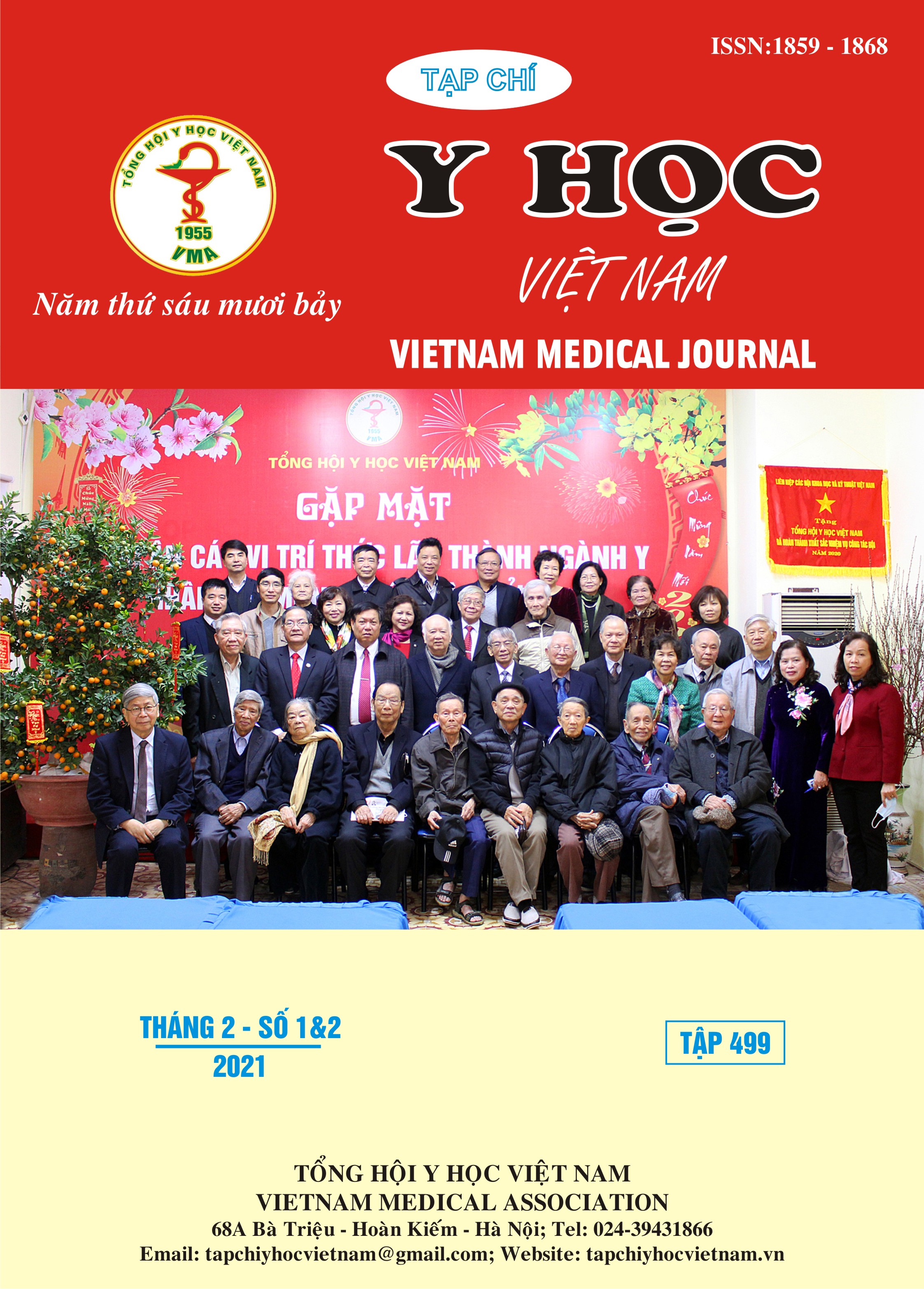THE ROLE OF MINI INVASIVE INTERVENTION IN NON OPERATIVE MANAGEMENT IN RENAL TRAUMA
Main Article Content
Abstract
Objectives: to evaluate the role of less invasive interventions in conservative treatment without renal trauma surgery. Subjects and methods: a prospective study of non-operative management renal trauma cases at Viet Duc Hospital from 2013 to 2018. Results: 24 patients with vascular interventions, of which 13 were initially indicated due to renal vascular lesions that expressed active bleeding, 11 were assigned during follow-up treatment because of renal artery aneurysm. 13 cases of urological endoscopy, in which 8 cases indicated from the beginning, 5 cases indicated during treatment monitoring due to persistent urinary extravasation or blood clots in the renal pelvis. Conclusion: Less invasive interventions address lesions in renal trauma that used to be surgical, thus increasing the success rate of non-operative management.
Article Details
Keywords
renal trauma, vascular intervention, urinary endoscopy
References
2. Trần Văn Sáng, Trần Ngọc Sinh (2011), Chấn thương thận và vết thương thận, Bài Giảng Bệnh học niệu khoa, Nhà xuất bản Phương Đông, 9-48.
3. Bruce L.M., Croce M.A., Santaniello J.M., et al (2001), Blunt renal artery injury: incidence, diagnosis and management, The American Journal of Surgery, 67: 550-554.
4. Fisher R.G., Ben-Menachem Y., Whigham C. (1989), Stab wounds of the renal artery branches: angiographic diagnosis and treatment by embolization, AJR Am J Roentgenol, 152 (6): 1231-5.
5. Keihani S., Anderson R.E., Fiander M., et al. (2018). Incidence of urinary extravasation and rate of ureteral stenting after high-grade renal trauma in adults: a meta-analysis. Transl Androl Urol. 7(Suppl 2): S169‐S178. doi:10.21037/tau.2018.04.13.
6. Miller D.C., Forauer A., Faerber G.J. (2002), Successful angioembolization of renal artery pseudoaneurysms after blunt abdominal trauma, Urology, 59(3): 444.
7. Ngo T.C., Lee J.J., Gonzalgo M.L. (2010), Renal pseudoaneurysm: an overview. Nat Rev Urol. 7(11): 619‐625.
8. Phillips B.J., Mirzaie M., Holzmer S., et al (2017), Penetrating Renal Trauma: A Review of Modern Management, J Eme Med Int Care, 3(3): 121.
9. Ramaswamy R.S., Darcy M.D (2016), Rterial Embolization for the Treatment of Renal Masses and Traumatic Renal Injuries, Tech Vasc Interv Radiol, 19: 203-10.


